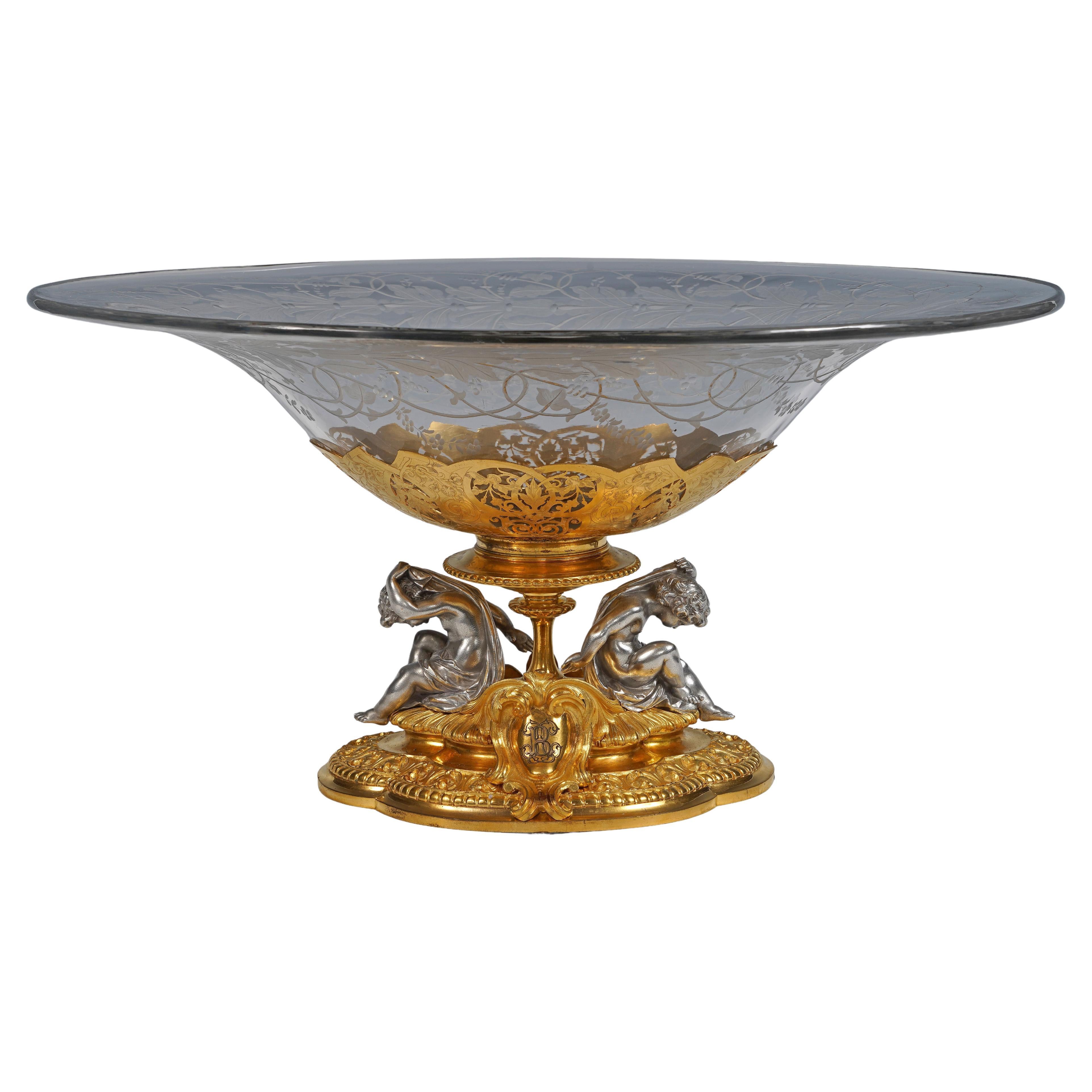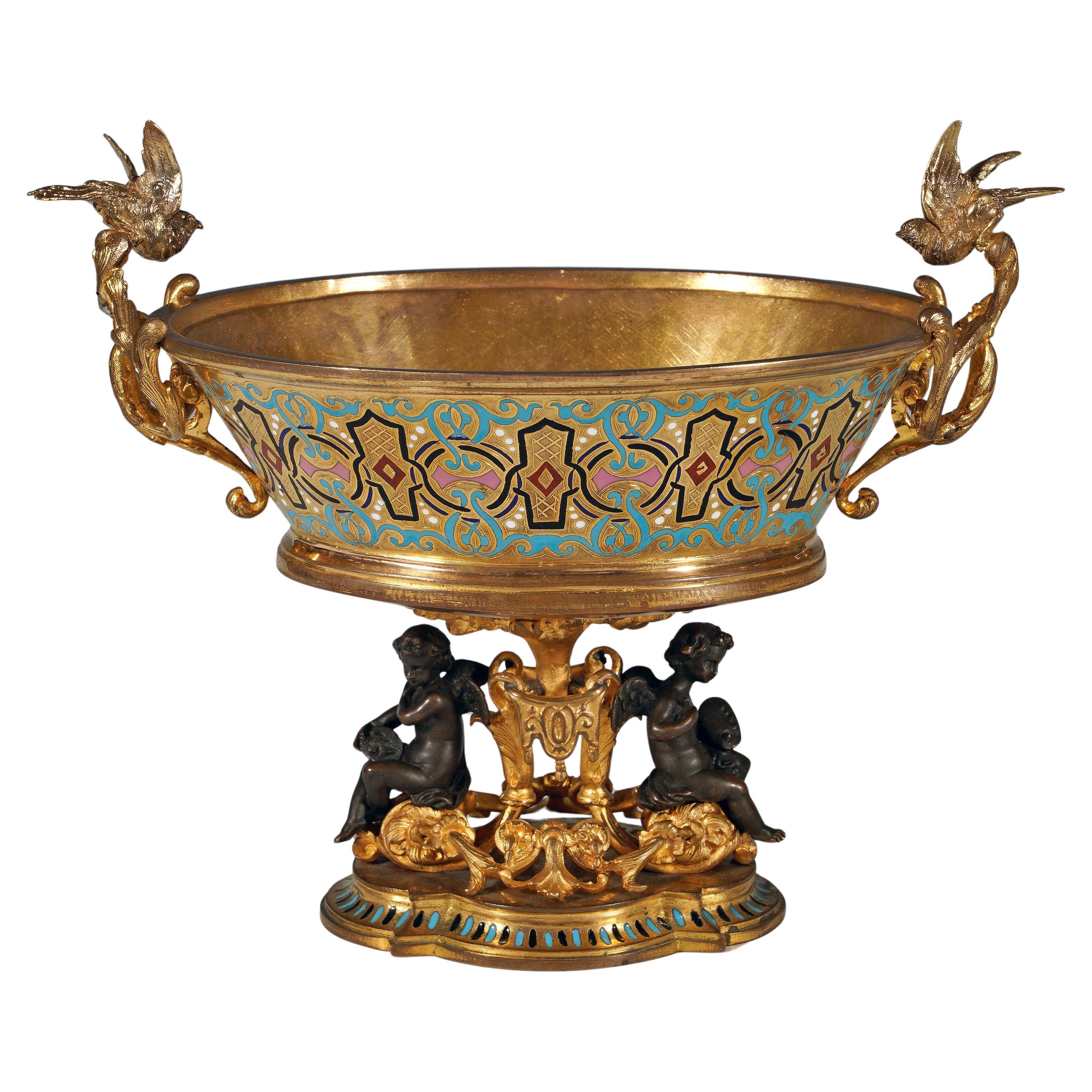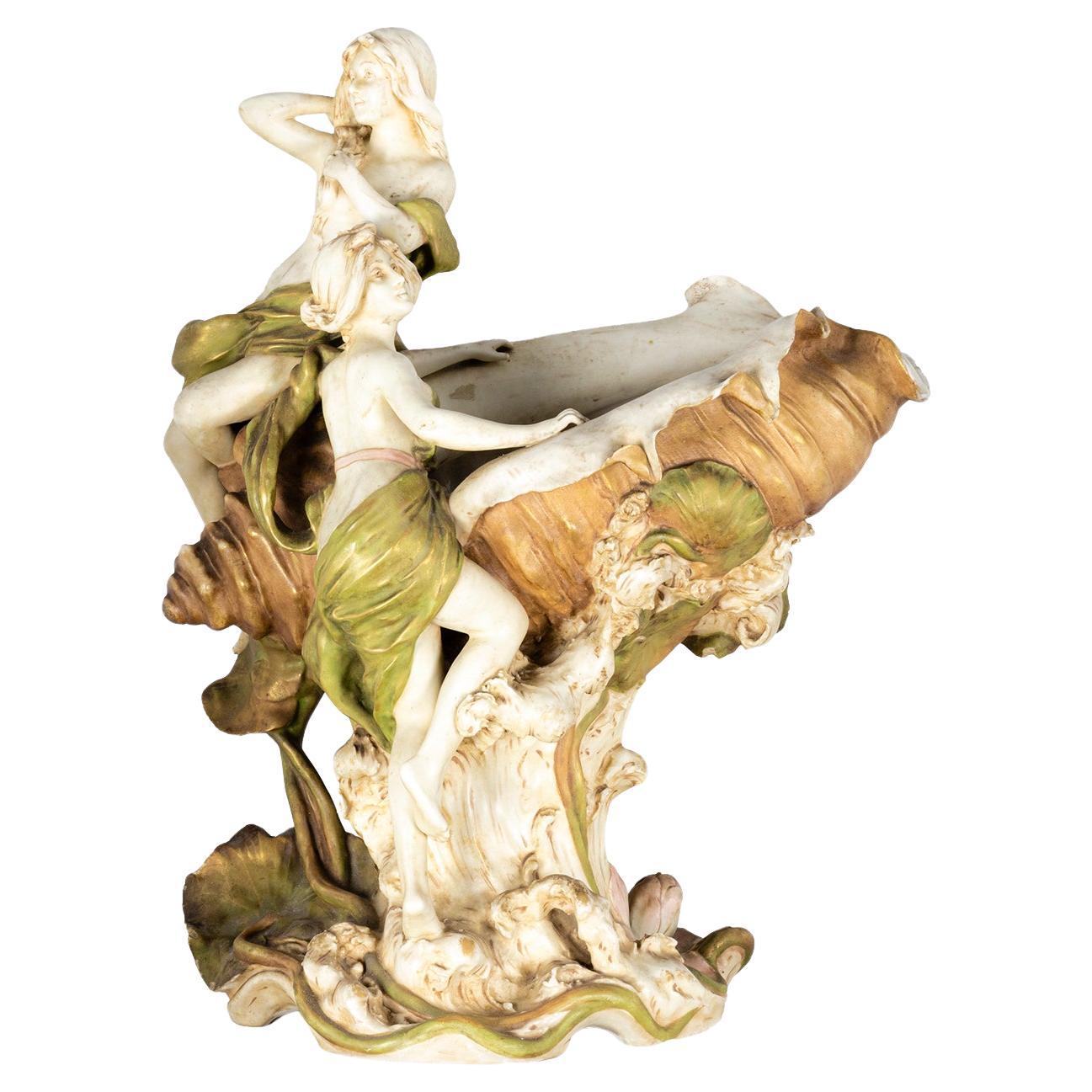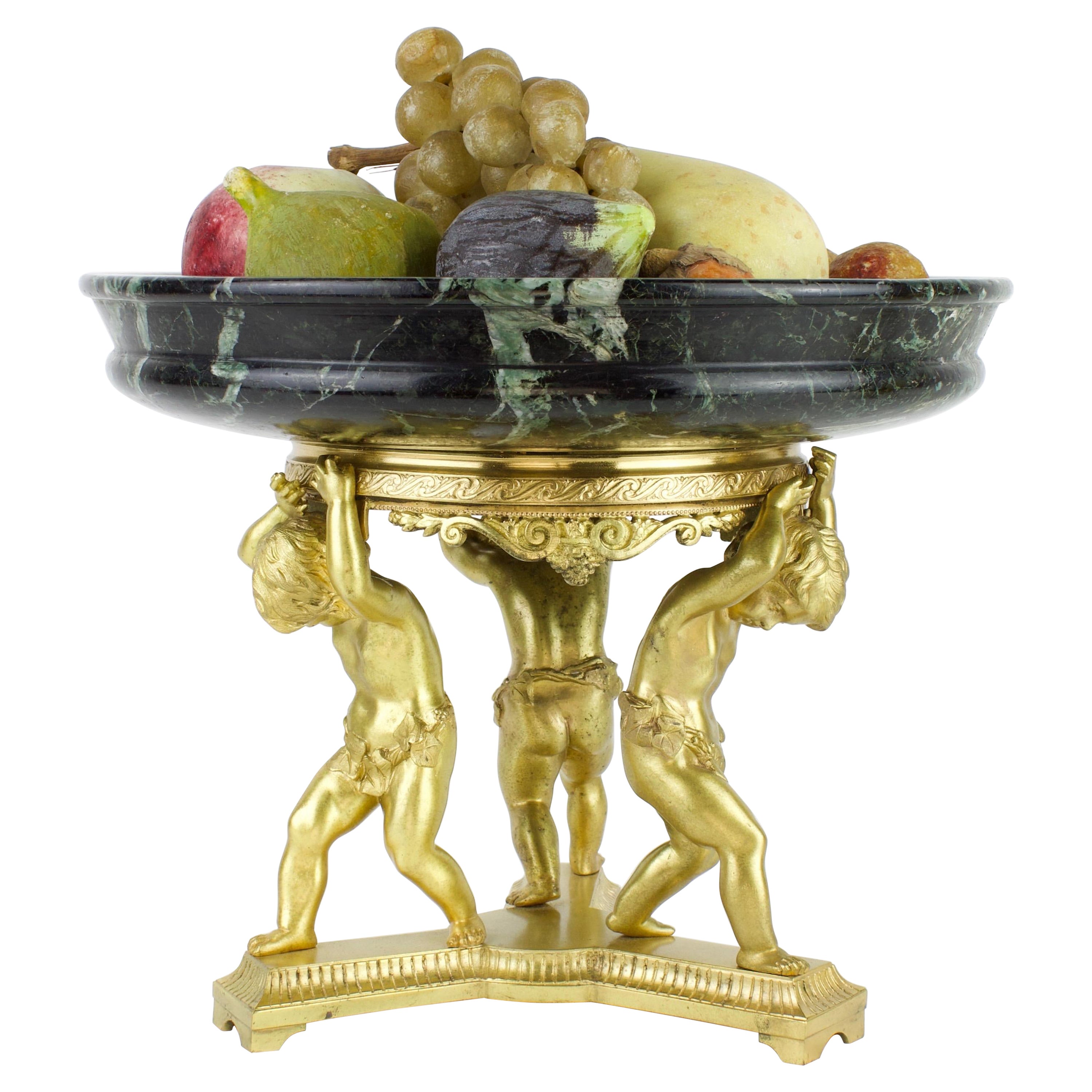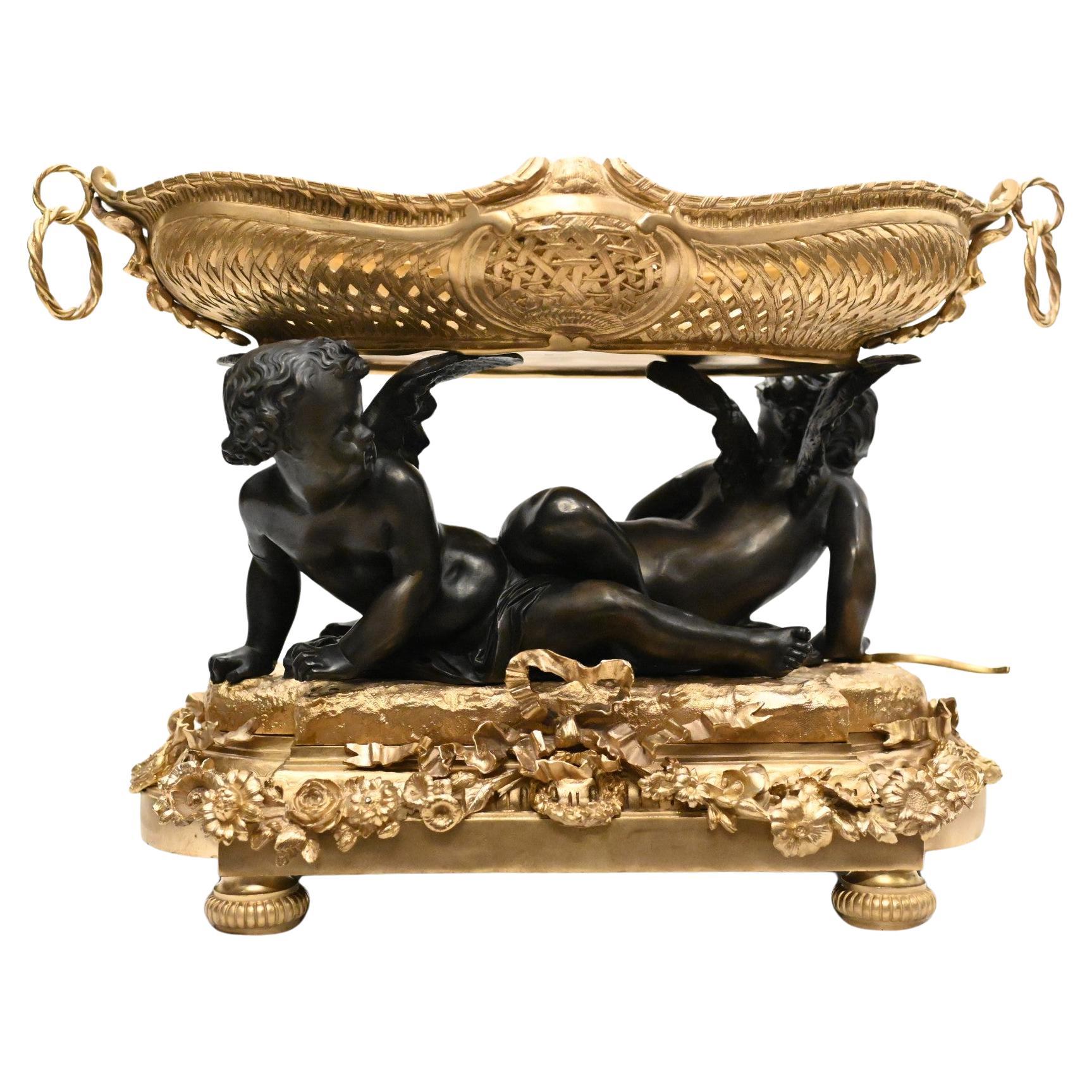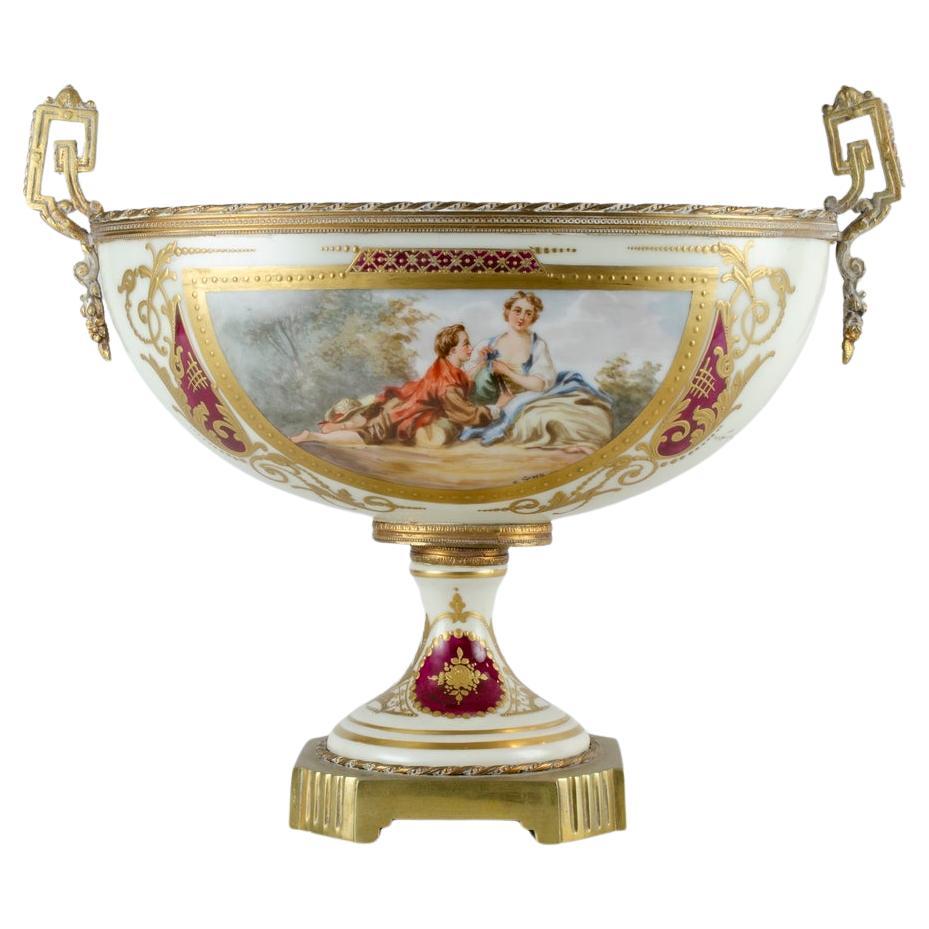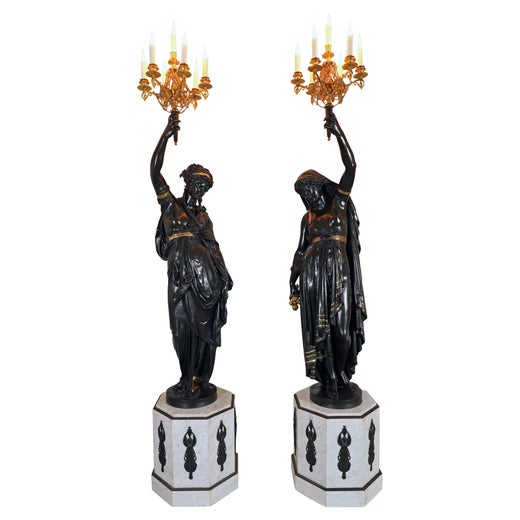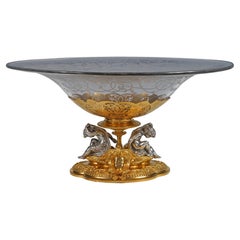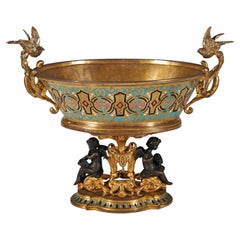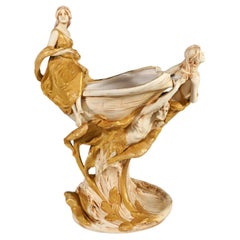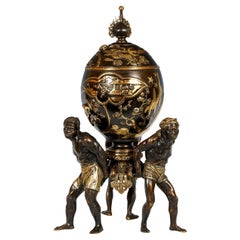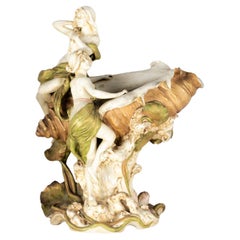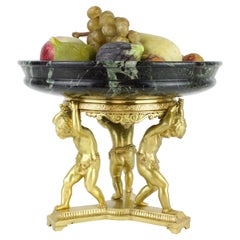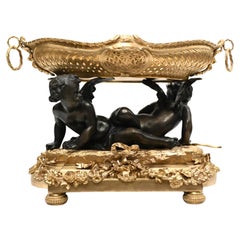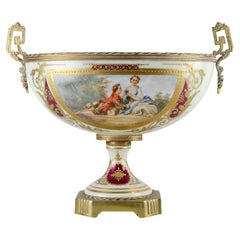The « Nymphs » Bowl by A-E Carrier-Belleuse and H. Journet & Cie, France, c 1878
About the Item
- Creator:Albert-Ernest Carrier-Belleuse (Sculptor),H. Journet & Cie (Manufacturer)
- Dimensions:Height: 33.86 in (86 cm)Diameter: 17.33 in (44 cm)
- Materials and Techniques:
- Place of Origin:
- Period:
- Date of Manufacture:circa 1878
- Condition:Wear consistent with age and use.
- Seller Location:PARIS, FR
- Reference Number:Seller: 19411stDibs: LU3860343310002
Albert-Ernest Carrier-Belleuse
Albert-Ernest Carrier-Belleuse was a French sculptor. Carrier-Belleuse was born on 12th June 1824 at Anizy-le-Château, Aisne, France. He began his training as a goldsmith's apprentice. He was a student of David d'Angers and briefly studied at the École des Beaux-Arts. His career is distinguished by his versatility and his work outside France, in England between 1850–55 and in Brussels around 1871. His name is perhaps best known because Auguste Rodin worked as his assistant between 1864 and 1870. The two traveled to Brussels in 1871 and by some accounts, Rodin assisted Carrier-Belleuse's architectural sculpture for the Brussels Stock Exchange.
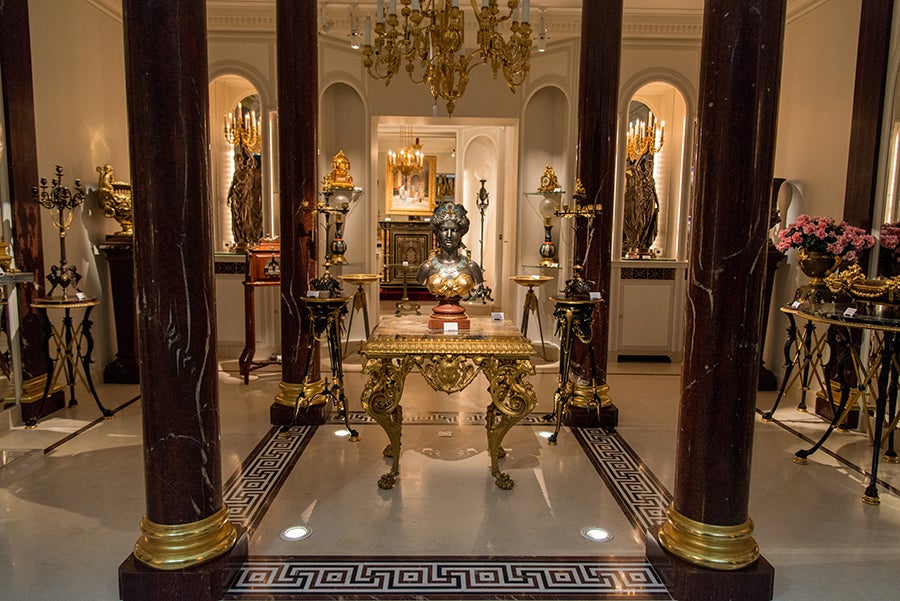
- ShippingRetrieving quote...Shipping from: PARIS, France
- Return Policy
More From This Seller
View AllAntique 1860s French Napoleon III Decorative Bowls
Crystal, Bronze
Antique 1870s French Napoleon III Decorative Bowls
Bronze, Enamel
Antique Early 1900s Czech Art Nouveau Decorative Bowls
Porcelain
Antique 1860s French Napoleon III Decorative Boxes
Bronze
Antique 1870s French Renaissance Revival Centerpieces
Marble, Bronze
Antique 19th Century French Chinese Export Decorative Bowls
Bronze
You May Also Like
Early 20th Century Czech Art Nouveau Vases
Porcelain
Antique Late 19th Century French Napoleon III Decorative Bowls
Marble, Bronze
Antique 18th Century French Provincial Decorative Dishes and Vide-Poche
Bronze
Antique 19th Century French Napoleon III Vases
Bronze
Vintage 1930s Italian Neoclassical Decorative Bowls
Bronze
Antique Late 19th Century French Neoclassical Revival Decorative Dishes ...
Bronze
